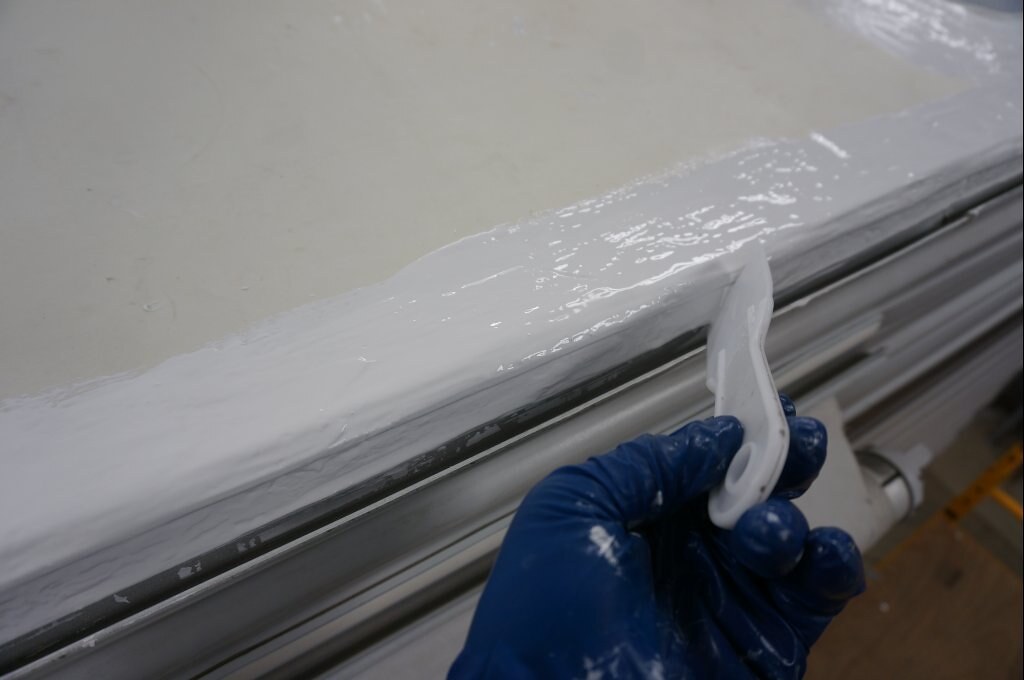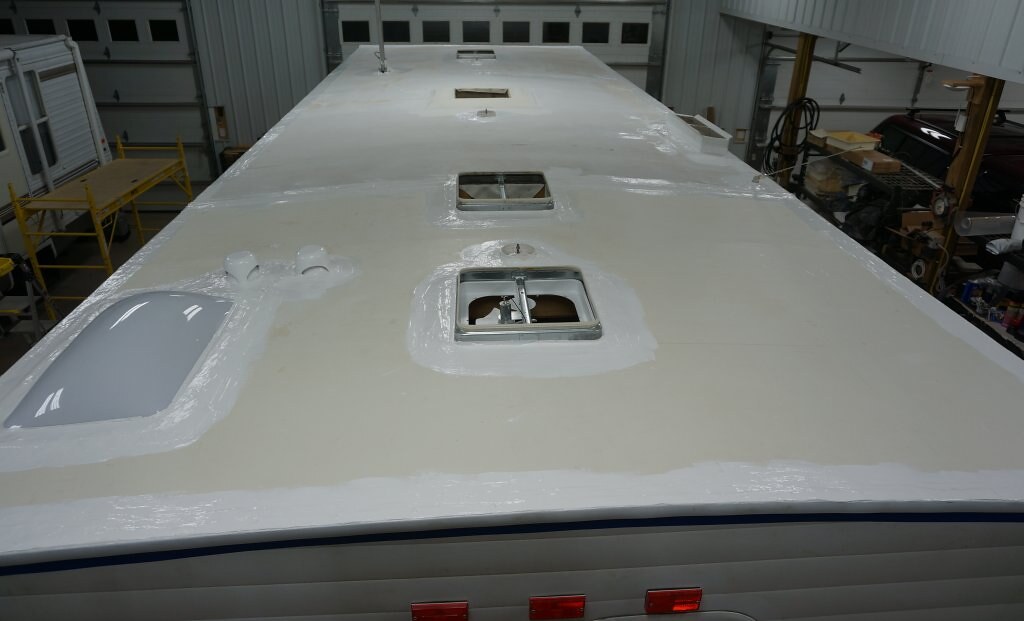Forum Discussion
JBarca
Feb 11, 2023Nomad II
profdant139 wrote:
John, you've given me a lot to think about! I don't know what my roof is made of -- but it has lasted for 11 years of constant sun exposure with no leakage at all, no cracking, no trouble yet.
And it would be nice to keep this little trailer for about ten more years -- I am in my early 70s, and I doubt I will be able to deal with trailering much beyond 80. I wish I could, I hope I will, but that is not the way to bet.
Having said that, I don't want to do a half baked job of preventive maintenance. So I have some homework to do.
Duck Coat users is itself very useful info. Let's stick with the tried and true.
Hi profdant,
Knowing a little more about your wants and needs, here are some thoughts.
First off, what roof membrane do you have? To answer this, we can sort it out two ways,
1. I "think" your camper was made by Cruiser RV. Was it? While your model is no longer offered,but they seem to still be in business. https://cruiserrv.com
Find your VIN, call them, ask for customer service, and ask what material your roof membrane is and the manufacturer (aka, Dicor, Alpha Systems, etc.)
2. Odds are, your roof is either EPDM rubber, TPO, a plastic material, or maybe PVC, another plastic material, but PVC was not as popular back in 2012 as it is now.
If you strike out at the factory, you can remove the crank open roof vent shroud inside the camper bathroom. Pull out the screen, and then it will expose the roof membrane folded over to the inside of the roof opening. From there have a look, EPDM is two layers, normally a top white layer with a black bottom layer. TPO is a solid color, and pending the brand, it could have a texture on the top roof side and a smooth side towards the roof deck. TPO in that era may also have a fleece backing. PVC is a solid color and many times slick, smooth top and bottom.
Take pictures and post them of what you see, it helps.
I tried to find a brochure on your camper and struck out. I did found this 2013 camper, I was looking for specs on it. https://www.rvusa.com/rv-guide/2013-cruiser-rv-fun-finder-x-travel-trailer-floorplan-x-139-tr15103.
Not sure how accurate it is, the picture shows a tandem axle and yours is the single axle. But, by your sig picture and the X139 in that ad, your camper may be about 15 feet long. That is a small camper. 4 ft of the 15 feet would be approx. the A-frame, so the roof may only be 11 ft long.
On a roof that small, this is getting easier all the time as the size is small. (take less time to do the work). The smallest one I did roof work on so far was a 21 ft camper, most are 24 to 32 feet, and the work just takes longer.
Your age situation, yes, I very much understand that. Many of the camper roofs/camper restorations I have done are for friends in your same age group. They do not want a new camper; they like what they have, they just ended up with water damage, and I helped them with that. I have a somewhat extreme retirement hobby. I restore water-damaged campers and service everything on them. I am completing number 16 now. Some big restorations, others, more minor damage repairs.
As we all age (I'm 64), our bodies do not always like getting up a camper roof to check caulking four times a year. And even then, if you have never been through a major water damage repair, you may not know what good or bad caulk looks like. Or you never knew you had to get up there that often or ever, in some cases.
For the last 8 campers, I have done roof jobs as part of the restoration work, five had Eternbonded seams, and 3 had Henry's Tropi-cool roof coatings. All of these friends wanted to keep their camper for a long time and had age or health issues preventing them from doing roof maintenance. Like you, they wanted to keep the camper and opted to have a different approach to caulking leaks, all of which created the water damage they ended up coming to me for.
Here are a few pics of one of the restorations with Ebond on the seams. A 2007 T286SR Sunline was bought new in 2007 for a friend in MI. The front wall, back wall, and the whole roof was replaced. New walk-on roof decking with a new EPDM rubber membrane and all seams E bonded. This work was completed in 2019. This camper is a summer cottage staying in one place and travels once in a while in northern MI.


Here is another 2006 Sunline, T276SR. This camper was bought by a friend with water damage. The inside was in OK condition, just with considerable water damage. This camper lives in a seasonal campground on the NJ shore area. It does get covered in the winter but is exposed the rest of the year. This camper had a front wall, rear wall, and main camper floor roof repaired, which had considerable water damage. This roof was repaired in bad spots, an EPDM roof, and the friend did not have the funds for a completely new decking and membrane. The leaks were from caulk failure, not membrane issues. The old roof was coated with Henry's 885 seam coating on all joints where caulk would have been used, followed by Henry's 887 coating on the large open areas. Note: This is not a walk-on roof, you had to use a plywood support board to service the roof.

The gutter rails with Henry 885 seam repair and then top coated with 887 while still wet. This treatment stops water from wicking in rusted screws behind the vinyl screw cover. There is no more vinyl screw cover.


The whole roof with all seams treated with Henry's 885 and cured before doing two coats of Henry 887 coating on the whole area.

The first 887 coat was applied to wait to cure.

Both options create high confidence that there will be no roof membrane or seam leaks.
Since so much effort was put into the restoration and the roof, the siding and siding moldings had to be addressed to make the camper last. All siding penetrations (doors, windows, cargo doors, power cords, fresh water fill door, water heater, and furnace were removed and serviced, etc.; any opening or molding in the siding. The old putty tape was removed, and new high-quality commercial building butyl was installed along with RV Proflex caulking over the exposed butyl tape. Point: While you may not have to remove everything in the siding, water damage through a siding opening can be as bad or worse than roof leaks. You will still need to inspect and re-caulk any of for siding joints, but they are at least at ground level.
I'm not saying you need to go to either of these methods; there is more to each of them than the few pics I showed, but if you have an older camper and want to keep it for another ten years where it lives outside all the time with snow conditions, you have to do something with the roof and check the siding joints.
I hope this helps,
John
About Technical Issues
Having RV issues? Connect with others who have been in your shoes.24,344 PostsLatest Activity: Dec 24, 2025